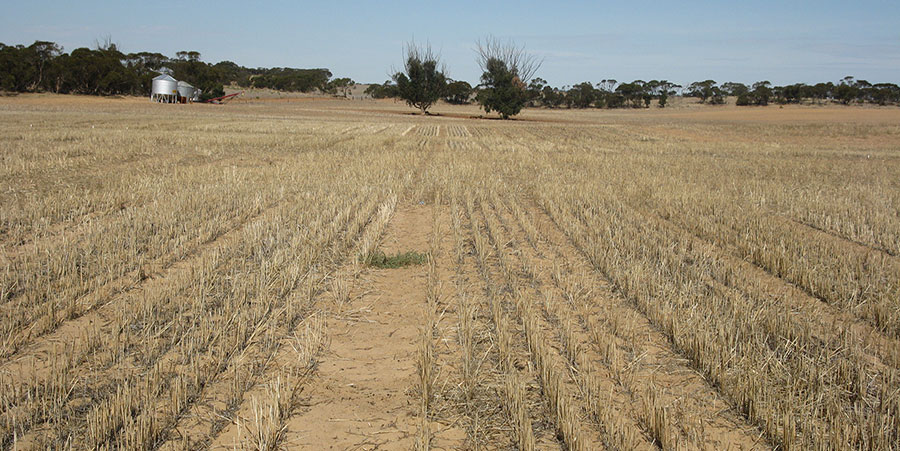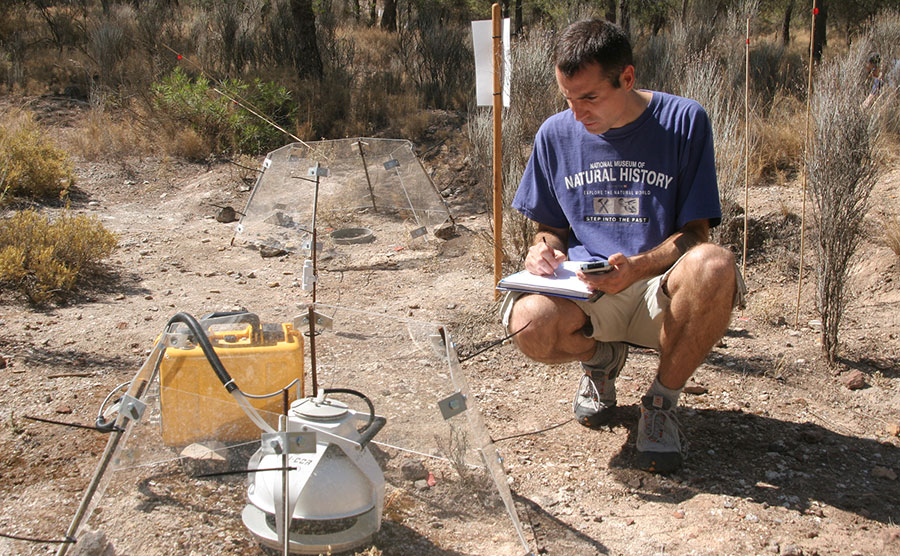Increasing Aridity Reduces Microbial Diversity: Implications For Ecosystem Services Under Changing Climates
Updated 29 January 2016. Originally published 8 December 2015

Image credit: Flickr Creative Commons/United States Department Of Agriculture
A new study drawn from more than 80 dryland sites across the world published in the Proceedings of the National Academy Of Sciences (PNAS) (opens in a new window) and Nature Communications (opens in a new window) indicates that increasing aridity reduces abundance and diversity of microbial communities which carry out for most of ecosystem services such as primary production, water filtration and climate regulation.
With drylands covering nearly 41% of the Earth's land surface and home to around 38% of the world's people, these changes pose additional challenges to the sustainability of natural and human populations in dryland regions.
Predictions include a growth in the land mass of dryland ecosystems by 10% before the year 2100, indicating that there is considerable need to understand how drying landscapes result in changes to the microbes and their ability to support life in dryland regions.
Increasing aridity reduces soil microbial diversity and abundance in global drylands. @PNASNews, @GlobalCentreLBI. https://t.co/2L5dbDL54T.
— Prof Brajesh Singh (@Prof_Braj_Singh) December 8, 2015
Happy to see my first paper in #PNAS It comes from a memorable stay at @westsyduhie with @Prof_Braj_Singh & his team https://t.co/hRZiXM6Dbd
— Fernando T. Maestre (@ftmaestre) December 8, 2015
In this study researchers from across the world drew samples from dryland sites in every continent except Antarctica. The study found that increasingly arid regions of the world feature lower diversity and abundance of key soil microbes, as a result of the lower water availability and soil carbon content of these drier soils.
"The results of this work help us to understand the environmental factors driving the abundance and diversity of soil bacteria and fungi in terrestrial ecosystems, and provide new clues about how these organisms may respond to ongoing climate change, which will bring increased levels of aridity in drylands worldwide", explains Professor Fernando Maestre from Spain, the first author and Principal Investigator of the project.
"Previously, global soil and fungi databases have contained little data from dryland ecosystems and there have been no field studies that have simultaneously examined how the abundance, composition and diversity of these organisms vary along aridity gradients", says Professor Brajesh Singh, senior author on the research team.
"Our facilities enabled us to perform high-volume genetic sequencing on samples drawn from the top 7.5cm of soil to identify the presence, diversity and abundance of major soil bacteria and fungi", explains Professor Singh.
The reduction in soil microbial diversity is thought to be a direct result of reduced soil carbon and increased daytime temperatures. The results of this study provide a new level of insight and supportive data to the role of climatic change on changes on soil microbial and fungal communities based on ecosystems from across different regions of the world.
Because these microbes play a key role in ecosystem services provided by drylands, these findings have significant implication for sustainable development under future climates when the proportion of dryland is projected to increase significantly.
The lead author of this paper, Professor Fernando T. Maestre, was a 2015 Research Exchange Fellow at the Hawkesbury Institute for the Environment and the Global Centre for Land-Based Innovation. Professor Brajesh Singh is the Director of the Global Centre for Land-Based Innovation.

Professor Maestre is shown here recording soil samples in dryland ecosystems.



